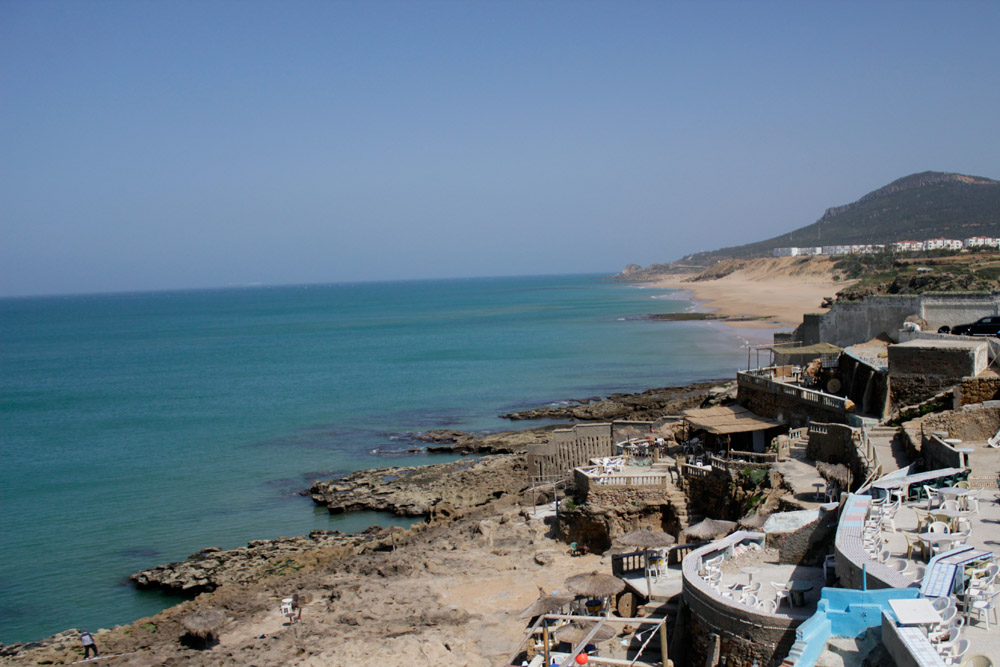
We stayed in Tarifa so we could go to Tangier, Morocco by ferry the next morning. From Tarifa we took the fast ferry to the port of Tangier. As we were waiting to get off the boat, Said (our private tour guide my mom hired) got on the boat and took our passports to be stamped so we didn’t have to wait any longer. He brought us off the ferry and onto his van. We went on a driving tour first. We passed the entrances to elaborate mansions owned by Saudi and Moroccan kings and witnessed beautiful overlooks, as Said pointed out interesting landmarks and mosques and explained the history of his city.
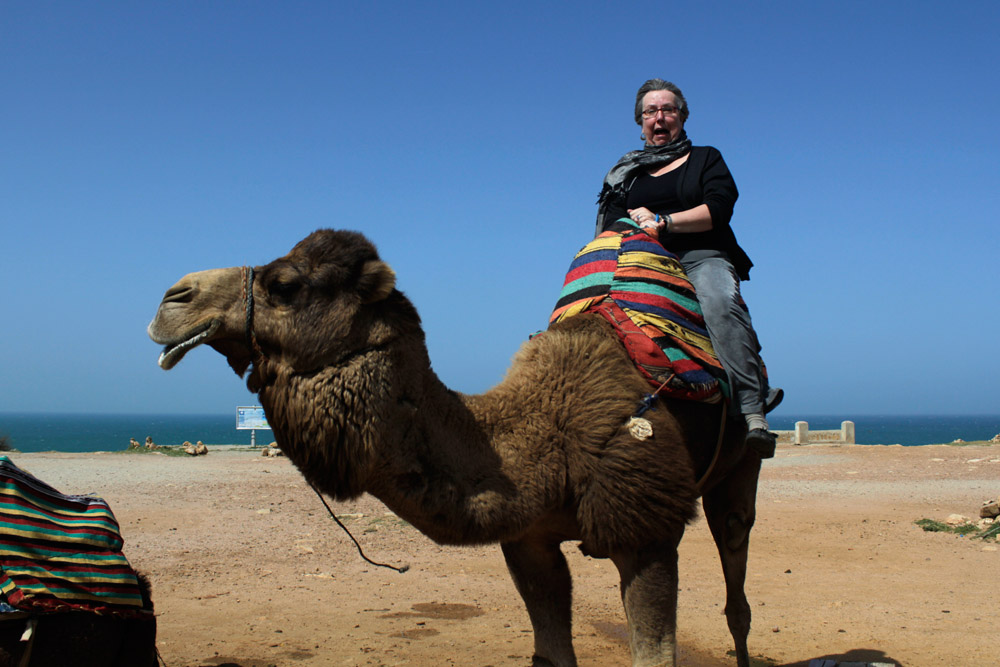
Then we were taken to ride camels near the beach. I enjoyed it—but my mom got the biggest camel and it was not her favorite part of the trip. The photos turned out great, though.
Then to the Hercules Cave (Grottes d’Hercules) where apparently he rested before taking on his twelve labors that would make him immortal. Our guide for the caves was a man who was born and grew up in them. It’s a national heritage site once a neolithic habitation, and later a quarry.
The opening is in the “Map of Africa.” Hercules is believed to be the founder of Tangier and, the story goes, the one who created the straights of Gibraltar with one strike of his sword.
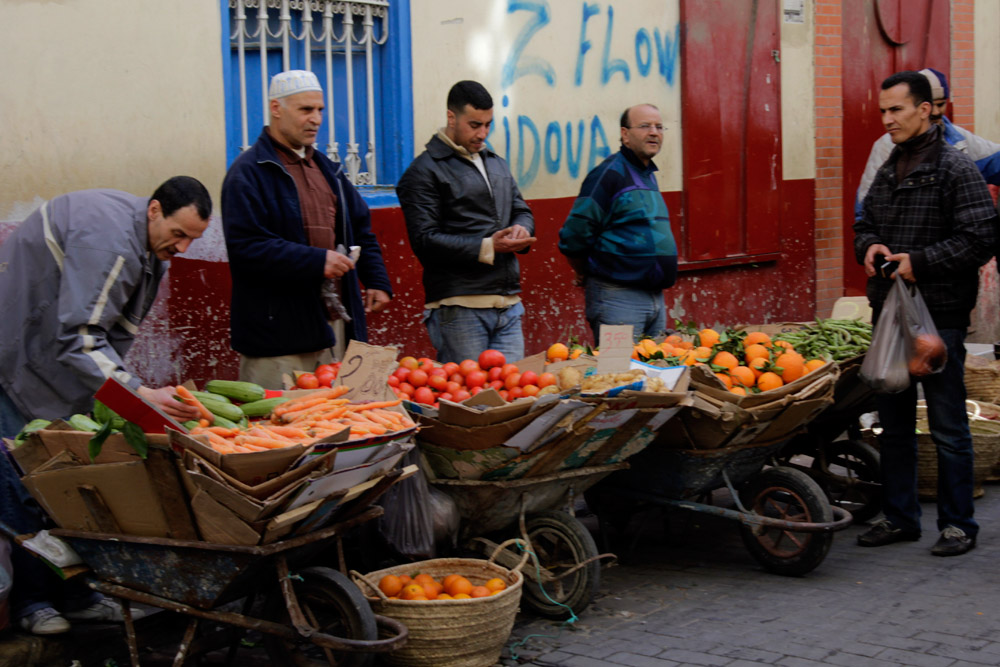
From the caves to the center of the town.
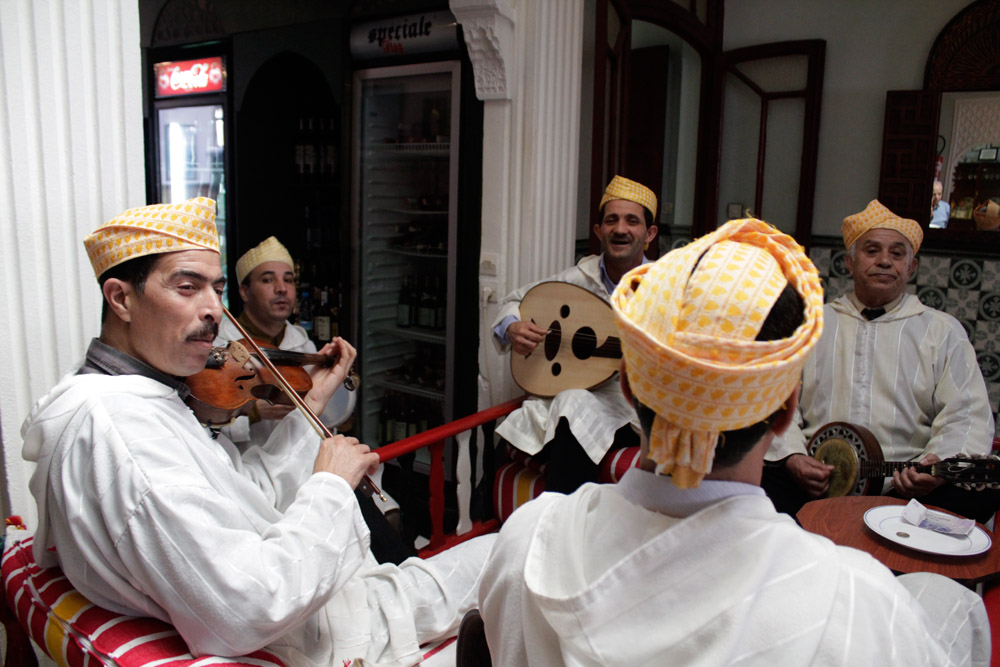
We had a bite to eat at a traditional Moroccan restaurant. Three courses. First a soup, then a sausage with a roasted pepper salad along with couscous and Chicken tikka, then a baklava for desert and mint tea. All the while we were surrounded by a beautiful décor and live music. I could not have asked for a better meal.
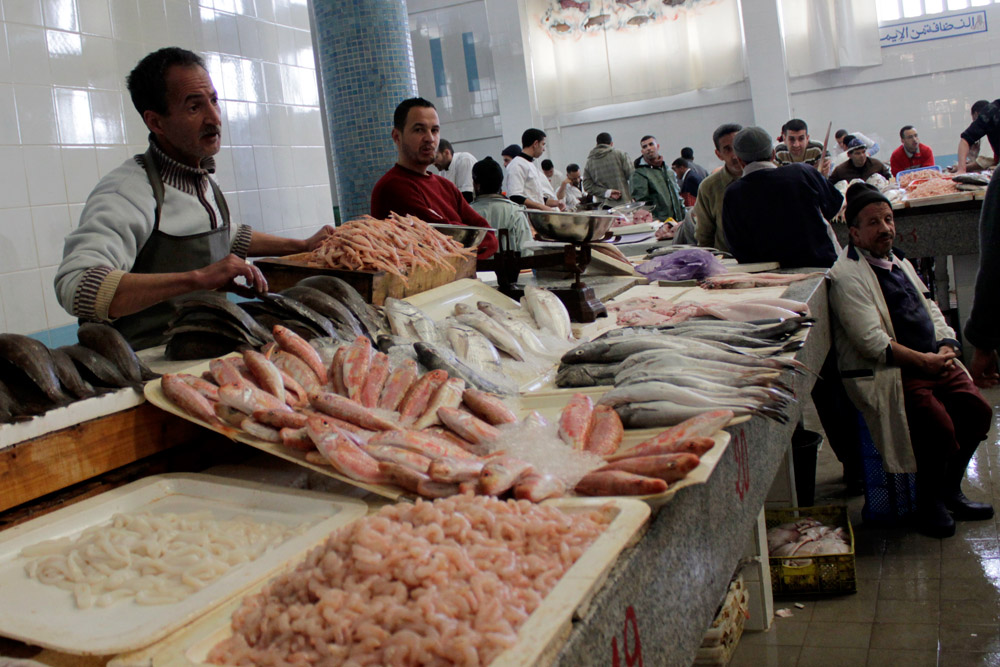
Then we headed to the market. Said said he only takes people to the places he goes. This included the meat market (saw cow’s head and all types of the insides of the animal), the fish market and then to the spice market. Everything was fresh. The fruits and veggies were amazing and it’s all grown in Morocco.
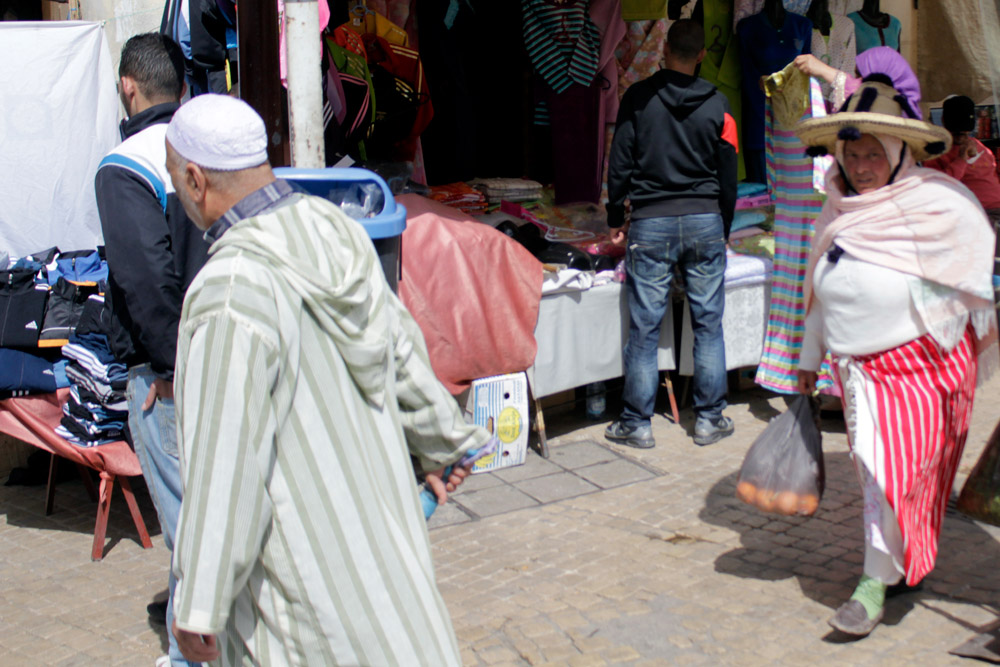
Along the way we saw women dressed in blankets and straw hats. They are called Berber women — the indigenous women of North Africa.
Then we headed to the casbah, which is the neighborhood in the poorest district. Many who don’t have running water there can fill the basins in their house with water from a fountain. They can hook up a hose to a faucet providing free water from the city.
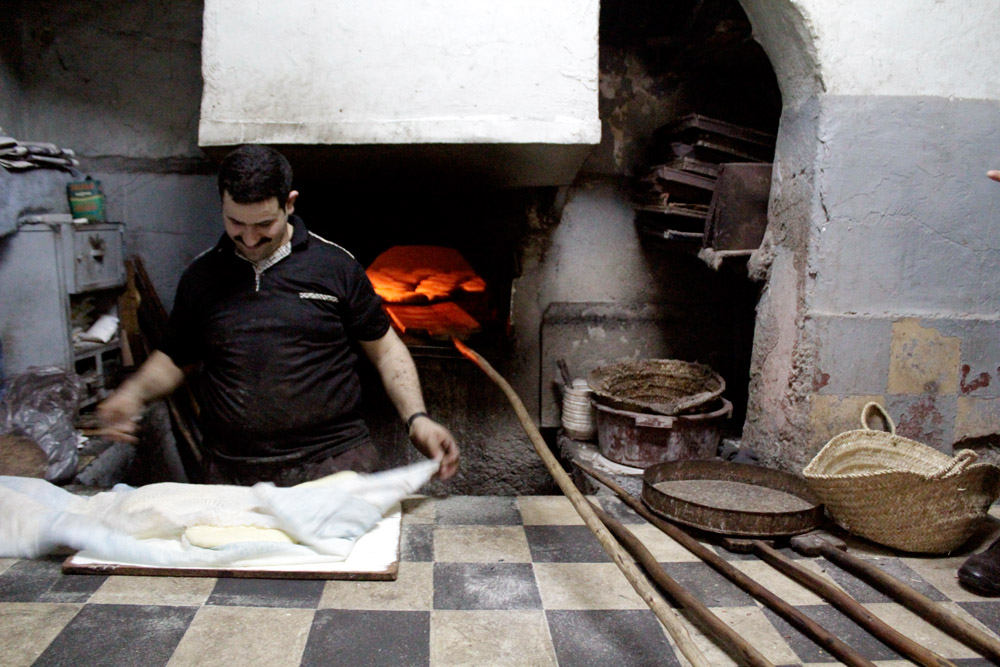
For those without stoves, there is also a community oven where a man will take your unbaked bread and put it in the oven and bake it for you. There are places you can go for a 1 euro meal if you are poor as well. Said said the poor might not live well, but they always have food and water.
After the casbah, we had a rug demonstration with many rugs layed out before us. They were beautiful, although expensive and I have no need for a rug. I’m 23, living in Spain and in two months, homeless. While a Moroccan rug would nicely decorate any space, it’s not too realistic to invest in a rug before the apartment. We hit up a few more shops and I got a few smaller things and then we took the ferry back. Said once again got us through the lines (since he is really like a local celebrity there) and we had an unforgettable time.
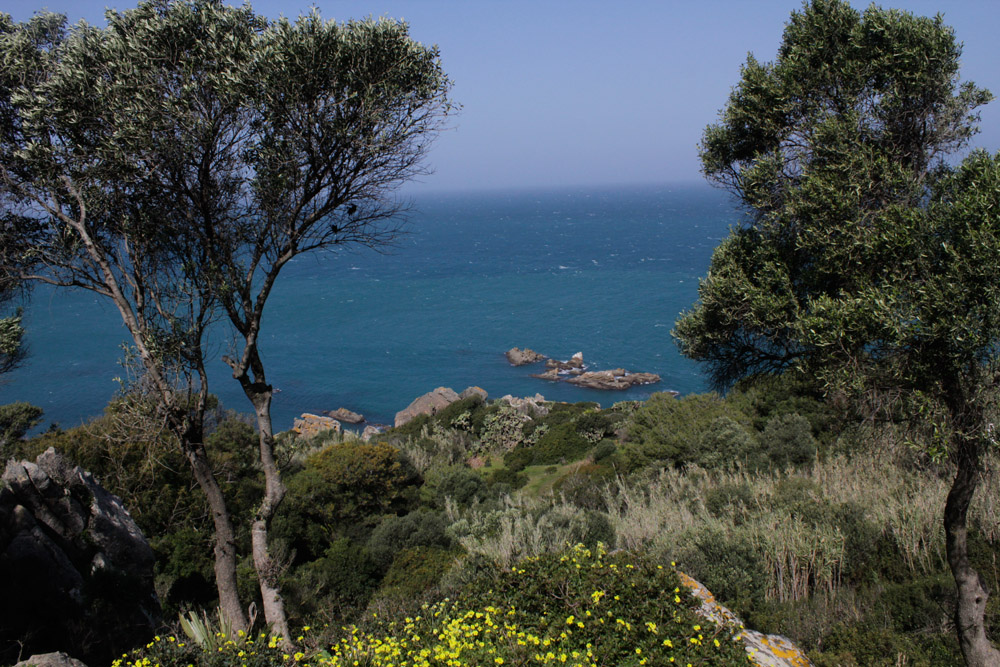
Any update about the trip after this will pail in comparison, so here is a quick finish. My mom and I headed to Sevilla for the day before her flight home. We walked through the gardens of the Alcazar, saw the cathedral and plaza España, had some tapas and returned to our hotel reminiscing about the trip.
I’m incredibly lucky: I get to live in Spain, travel and fully enjoy the experience. I get to do so much while living in my small village and then my mom visits me and I get to see and do more. I have two months left and I just realized each moment with my mom how lucky I am.